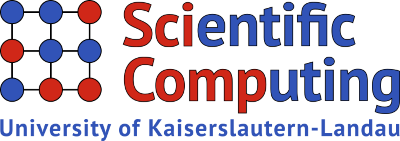Date and Place: Thursdays and hybrid (live in 32-349/online via Zoom). For detailed dates see below!
Content
In the Scientific Computing Seminar we host talks of guests and members of the SciComp team as well as students of mathematics, computer science and engineering. Everybody interested in the topics is welcome.
List of Talks
Event Information:
-
Fri24Mar2017
SC Seminar: Tatiana Kozubskaya
11:00SC Seminar Room 32-349
Dr. Tatiana Kozubskaya, Computational Aeroacoustics Laboratory, Keldysh Institute of Applied Mathematics of Russian Academy of Sciences, Moscow, Russia
Title:
Higher-accuracy edge-based schemes on unstructured meshes for simulation of turbulent flows and acoustic fieldsAbstract:
The talk begins with a review of edge-based schemes for unstructured meshes and history of their development. The recent modifications of these schemes aimed at their accuracy improvement can be divided into two main families. The first family exploits the idea of edge-based reconstruction of variables while the second one – the flux correction procedures. The talk presents our achievements in both directions. They are the SEBR (simplified edge-based reconstruction) and UFC (unsteady flux correction) schemes respectively. The numerical results are given for model and benchmark problems with smooth and discontinuous solutions.
The second part of the talk concerns the applied problems which we have computed or are still computing with the use of higher-accuracy edge-based schemes. In particular, they include simulations of transonic cavity flow, subsonic jets, aerodynamic and acoustic characteristics of helicopter rotor and some other problems. Most predictions of turbulent flows are carried out with the help of hybrid RANS-LES nonzonal approaches DES, DDES, IDDES implemented in our in-house code NOISEtte. The integral Ffowcs Williams Hawkings method is used for the calculation of acoustic farfields. A brief description of the code precedes the numerical results. The computations are performed on Russian supercomputers Lomonosov of MSU, MVS-10P of JSCC and KIAM cluster K100.
